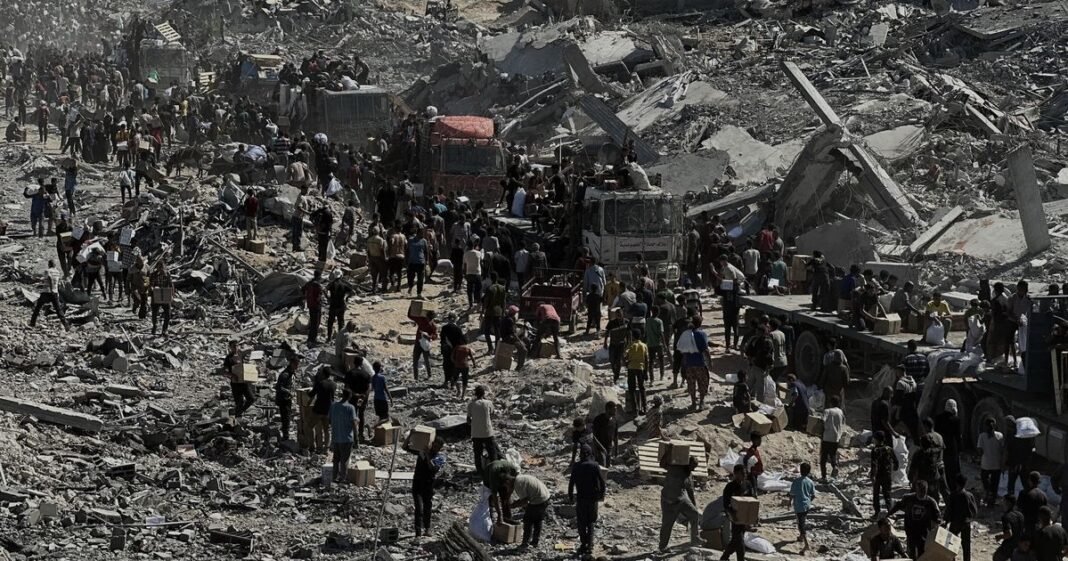Harrowing scenes from Gaza depict emaciated Palestinians scrambling to collect bags of flour upon their return to devastated towns and cities, following the initiation of a ceasefire in the area.
A peace agreement between Israel and Hamas has been reached to halt the deadly conflict in the Gaza Strip, which has claimed over 70,000 lives, including those of innocent women and children. As part of the accord, Hamas must return 48 hostages to Israel by Monday midday.
The ceasefire has enabled numerous Gazans to reoccupy their homes in places like Gaza City and Khan Yunis, only to discover that much of the once vibrant neighborhoods now lie in ruins.
Israel’s directive for the IDF to enter densely populated regions, such as the Gaza Strip, has forced thousands of residents, already stripped of everything during the prolonged violence, to flee. On Friday, tens of thousands of displaced Gazans were seen returning to Gaza City and Khan Yunis.
Startling images captured vast crowds carrying provisions through debris-strewn streets in Khan Yunis. The initial convoy of aid trucks, transporting essential food, medication, and drinking water, has entered Gaza via the Kerem Abu Salem border crossing in compliance with the ceasefire terms.
Heart-wrenching scenes reveal Palestinian civil defense teams retrieving the skeletal remains of Gazans killed by Israel, now accessible due to the ceasefire. Buried beneath the rubble are an estimated 10,000 bodies yet to be recovered, further adding to the death toll from the two-year conflict.
Shortly after the second anniversary of the October 7 attacks, Donald Trump announced the imminent release of all hostages and Israel’s withdrawal of troops to pave the way for a lasting peace agreement.
Despite this much-awaited respite in Gaza, the populace of the war-torn enclave will gradually embark on the arduous task of reconstruction amidst the staggering loss of life.
In August, a famine was officially declared in Gaza, with hundreds of children succumbing to malnutrition-related causes. This declaration marked a critical juncture in the humanitarian crisis, being only the fifth time a famine has been proclaimed, following instances in Somalia in 2011, South Sudan in 2017 and 2020, and Sudan last year.

